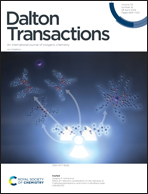N–C QDs coated with a molecularly imprinted polymer as a fluorescent probe for detection of penicillin
Abstract
Many diseases are due to bacterial infections, which are treated by penicillin. Existing methods for penicillin detection have relatively high requirements for sample storage and processing, personnel professionalism, and instruments. Herein, water-soluble N–C quantum dots (QDs) from wheat straw were synthesized in a green way by using an efficient and simple method. The N–C QDs were modified with an imprinted layer by a gel–sol method. Penicillin selectively quenched the fluorescence emission of N–C QDs@MIP, and a linear relationship was obtained in the concentration range of 1.0 × 10−6–15.2 × 10−6 mol L−1. The reliability of the sensor in real sample analysis was satisfactory with results in the range of 93.6%–100%, and the sensor showed good reproducibility and long-term stability. The study provides a simple strategy to fabricate N–C QDs@MIP with a highly selective recognition ability and opens an avenue to develop highly efficient sensing probes for the detection of antibiotics in biological applications.



 Please wait while we load your content...
Please wait while we load your content...